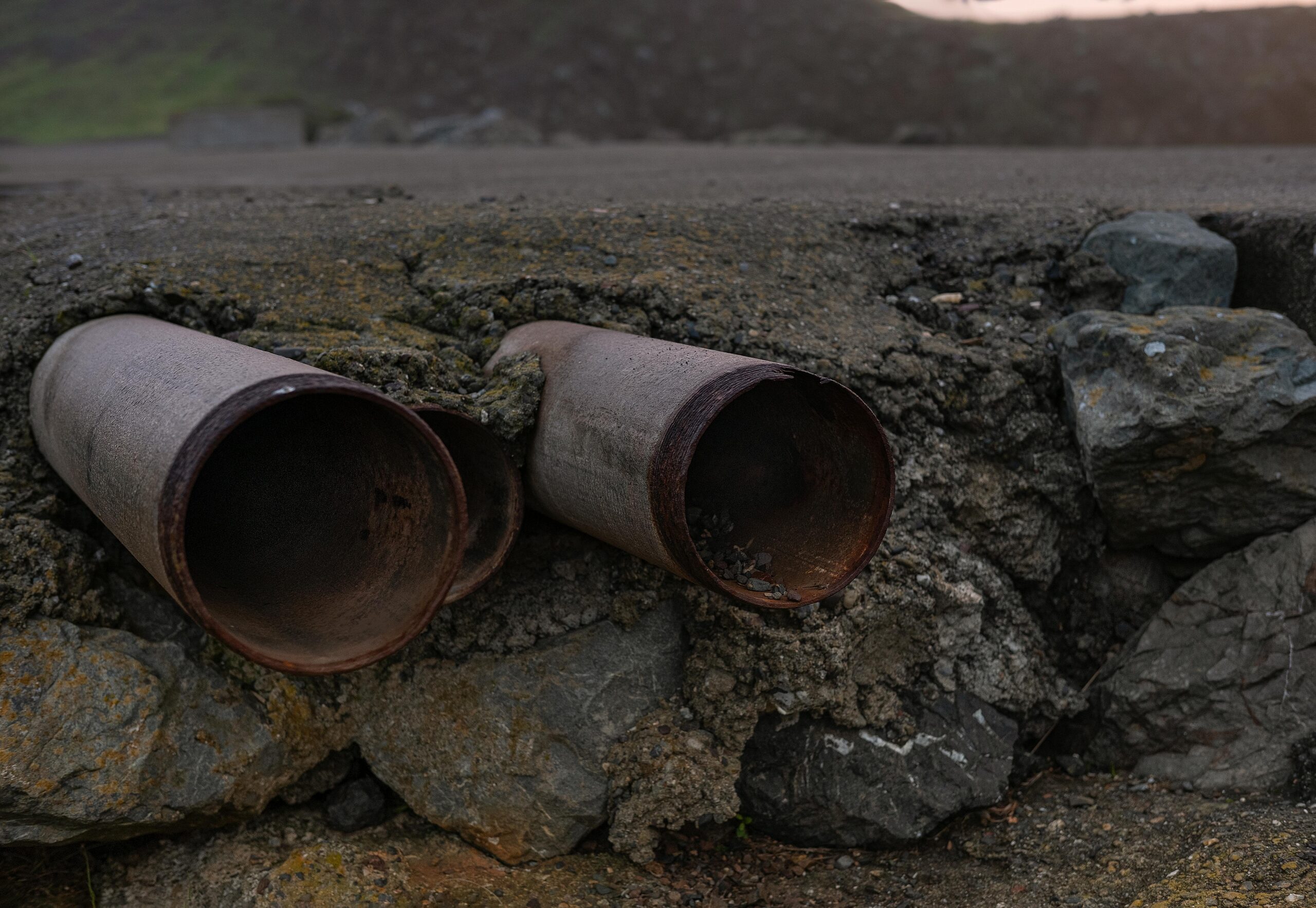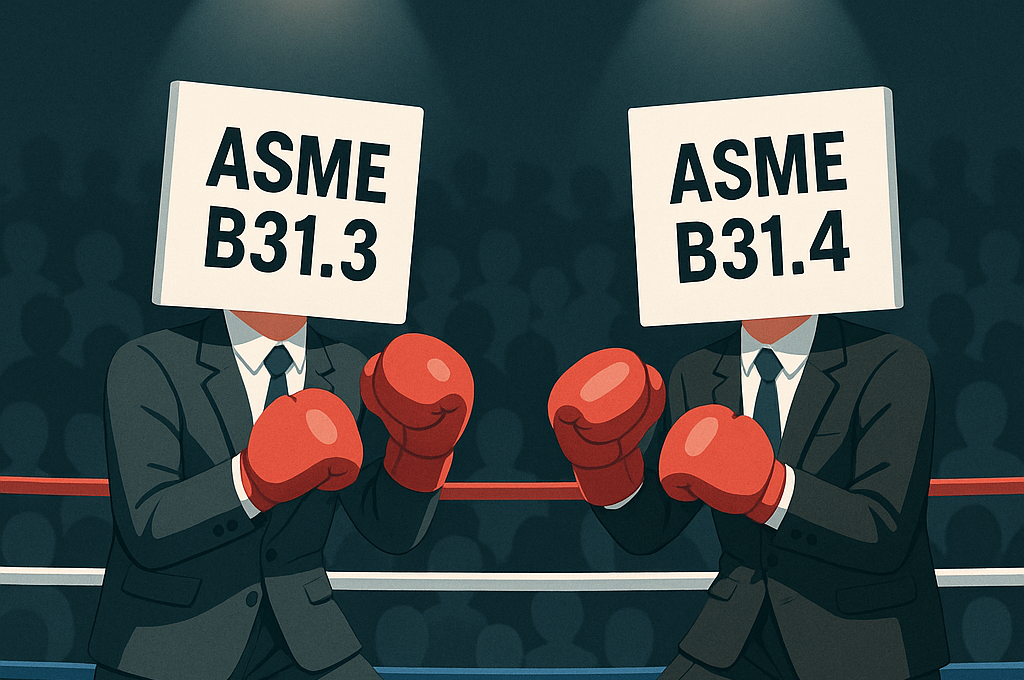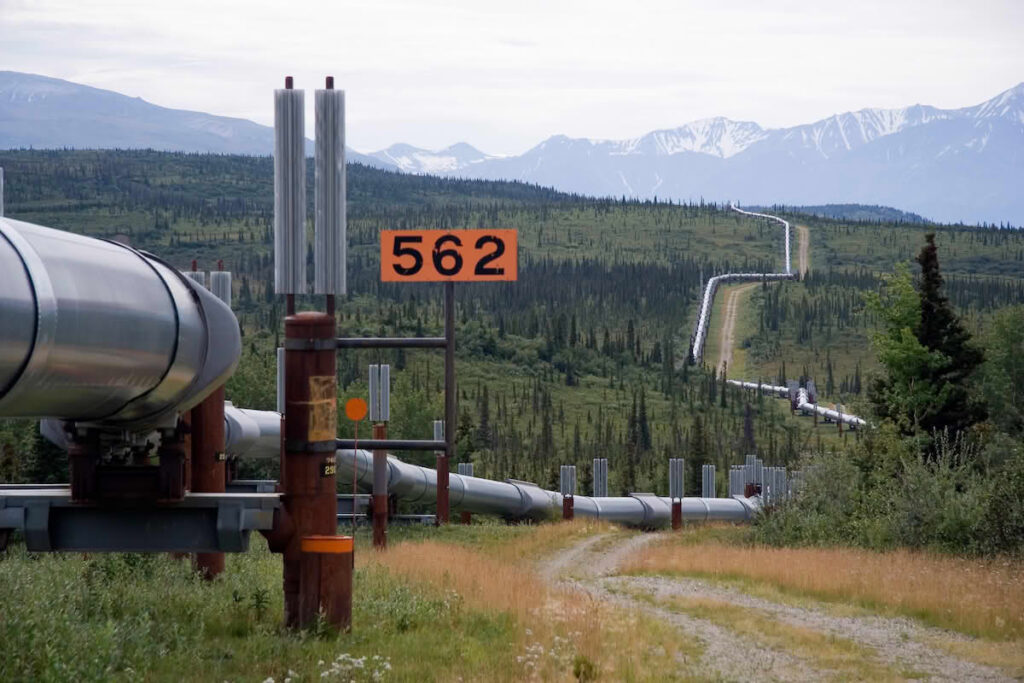There are two road crossing procedures in accordance with API PR 1102 which are for rig load and highway load. The calculation consists of 8 major steps.
Step A – Design Input Parameters:
There are three categories for input.
Category 1 – Pipe and Operational Data:
- Nominal Diameter, ND
- Outside Diameter, D
- Operating Pressure, p
- Steel Grade
- API 5L Grade A25 to Grade X70
- ISO 3183 GR L245 to Gr L485
- Specified Minimum Yield Strength, SMYS
- Design Factor (for hoop stress – Barlow), F
- Design Factor (Effective stress), F’
- Design Factor (for fatigue stresses), F”
- Longitudinal Joint Factor, E
- Installation Temperature, T1
- Maximum/Minimum Operating Temperature, T2
- Temperature Derating Factor, T
- Corrosion Allowance
- Wall Thickness, t
- Corroded Wall Thickness, tw
- Corroded Wall Thickness = Wall thickness – Corrosion Allowance
- Transported Product
Category 2 – Installation and Site Data:
- Depth, H/C
- Bored Diameter, Bd
- Soil Type
- Soft to medium clay sand with high plasticities
- Soft to medium clay sand silts with low to medium plasticities, loose sands & gravels
- Stiff to very stiff clays and silts; medium dense sands
- Dense to very dense sands and gravels
- Modulus of Soil Reaction, E’
- Resilient Modulus, Er
- Unit Weight, y
- Unit Weight
- Type of Longitudinal Weld
- Seamless
- SAW
- Wheel Load Design
- Design wheel load from single axle, ps
- Design wheel load from tandem axle, pt
- Pavement Type
- Flexible pavement
- No pavement
- Rigid pavement
Category 3 – Misc. Pipe Steel Properties:
- Young’s Modulus, Es
- Poisson’s Ratio, ns
- Coefficient of Thermal Expansion, aT
Step B – Check Allowable Hoop Stress
- Calculate the Hoop Stress as follow:
- SHi (Barlow) = Design Pressure * Outside Diameter / 2* Corroded Wall Thickness
- Check if SHi (Barlow) <= F (Design Factor) * E (Longitudinal joint factor) * T (Temperature Derating Factor) * SMYS (Specified Minimum Yield Stress)
Step C – Circumferential Stress Due to Earth Load
- Wall thickness to diameter ratio, tw / D
- Stiffness factor for earth load circumferential stress, KHe in accordance to figure 3, API 1102
- Depth to bored diameter ratio, H/Bd
- Burial factor for earth load circumferential stress, Be in accordance to figure 4, API 1102
- Bored diameter to outside diameter ratio, Bd/ D
- Excavation factor for earth load circumferential stress Ee in accordance to figure 5, API 1102
- Circumferential stress due to earth load, She
- SHe = KHe * Be * Ee * y * D
Step D – Impact Factor, Fi and Applied Design Surfaces Pressure, w
- Impact factor, Fi
- In accordance with figure 7, API 1102
- Applied design surfaces pressure, w
- Contact area over applied wheel load, Ap
- W = pt/ Ap or w= ps/ Ap
Step E – Cyclic Stresses, DSHh and DSlh
- Cyclic circumferential stress, DSHh
- Highway stiffness factor for cyclic circumferential stress, KHh in accordance with figure 14, API 1102
- Highway stiffness factor for cyclic circumferential stress, GHh in accordance with figure 15, API 1102
- Highway pavement type factor, R in accordance with table 2, API 1102
- Highway axle configuration factor, L in accordance with table 2, API 1102
- DSHh = KHh * GHh * R * L * Fi * w
- Cyclic longitudinal stress, DSLh
- Highway stiffness factor for longitudinal stress, KLh in accordance with figure 16, API 1102
- Highway stiffness factor for longitudinal stress, GLh in accordance with figure 17, API 1102
- Highway pavement type factor, R in accordance with table 2, API 1102
- Highway axle configuration factor, L in accordance with table 2, API 1102
- DSLh = KLh * GLh * R * L * Fi * w
Step F – Circumferential Stress Due To Internal Pressurization, Shi
- SHi = p * (D – tw ) / ( 2 * tw )
Step G – Principal Stresses, S1, S2, S3
- S1 = SHe + DSH + Shi
- S2 = DSLh – Es * aT * (T2 – T1) + ns * (SHe + SHi)
- S3 = -p
- Seff = ( 0.5 * [ (S1 – S2)2 + (S2 – S3)2 + (S3 – S1)2 ] )0.5
- Seff < SMYS * F’ ?
Step H – Check Fatigue
- Girth Welds
- Fatigue endurance limit of girth weld, SFG
- SFG * F’’
- Check DSLh < SFG * F”?
- Longitudinal Welds
- Fatigue endurance limit of longitudinal weld, SFL
- SFL * F’’
- Check DSHh < SFL * F”





